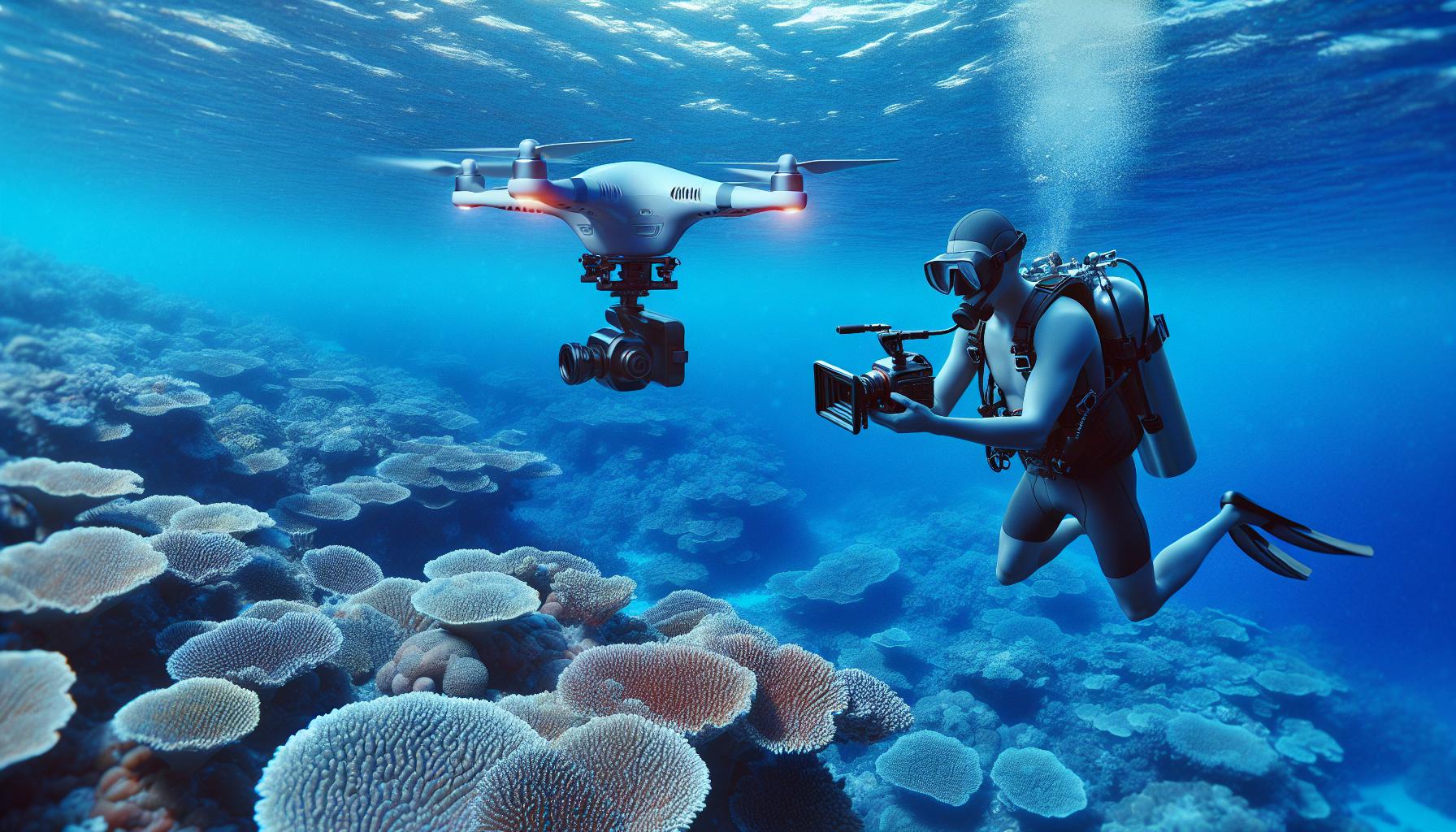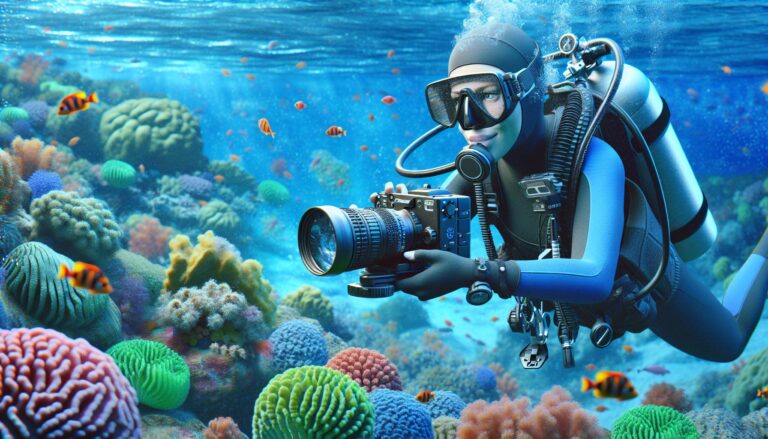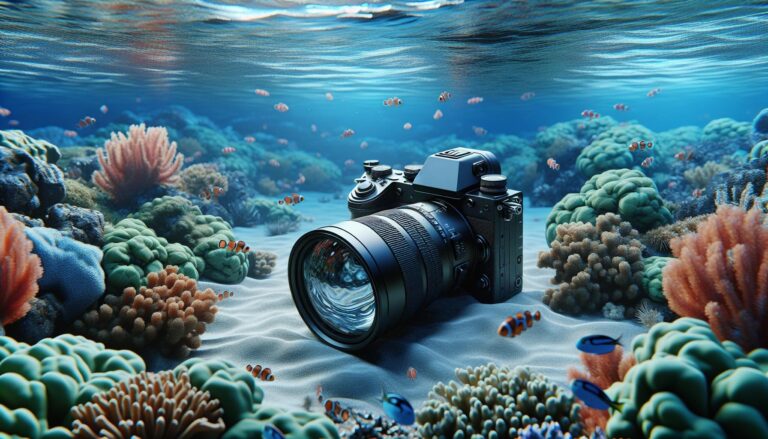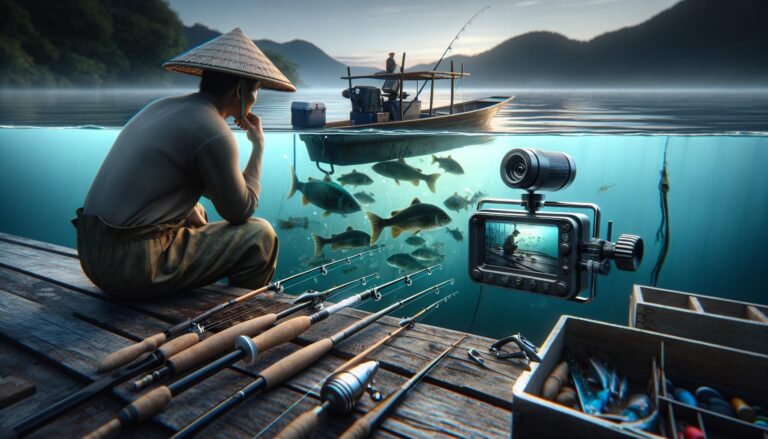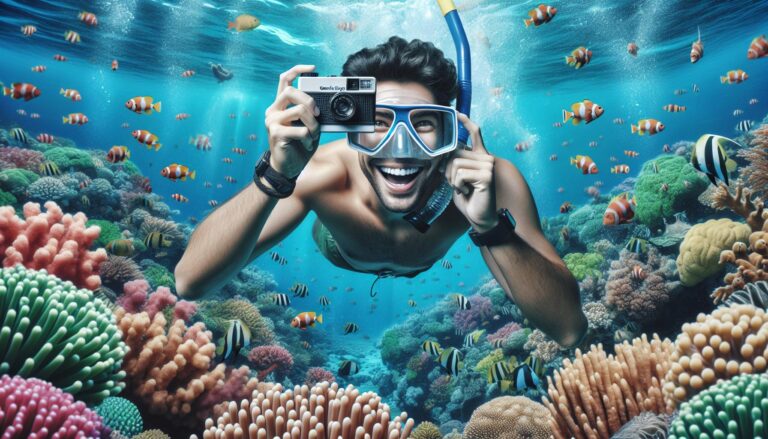Exploring the Deep: A Comprehensive Guide to Underwater Drones with Cameras
Dive into the unseen depths of the ocean with me as we explore the fascinating world of underwater drones with cameras. These high-tech gadgets are revolutionizing how we perceive and interact with the underwater environment. Whether it’s for research, exploration, or pure entertainment, there’s no denying the allure of these submersible companions.
Harnessing the power of advanced technology, underwater drones are opening up a new frontier for exploration. They’re not just tools for scientists or filmmakers anymore. With the rise in affordability and user-friendly interfaces, anyone can now explore the mysteries of the deep blue sea. Stay tuned as we delve deeper into this captivating topic.
Understanding the Underwater Drone with Camera
Diving into the inner workings of underwater drones with cameras further illuminates their effectiveness and utility. It’s fascinating to visualize how these high-tech marvels operate, particularly when I delve into the fundamentals of their design and the vital role of their onboard cameras.
Fundamentals of Underwater Drones
Underwater drones, often referred to as remotely operated vehicles (ROVs), are advanced gadgets designed to withstand the pressures, temperatures, and conditions found beneath the waves. Equipped with propellers, they operate under remote control from the surface. These underwater drones typically employ a waterproof design that encompasses a sealed body to keep sensitive electronics dry, as well as a buoyant material to ensure they don’t submerge too deep. For instance, the Blueye Pioneer ROV, boasting a maximum depth rating of 150 meters, exemplifies this balance between robustness and buoyancy.
Deployed in many professional fields including marine biology, archeology, as well as commercial and scientific exploration, these devices represent advanced drop-in technology. Numerous companies are also creating consumer-friendly versions, making underwater exploration accessible to everyone.
Importance of Cameras in Underwater Drones
Without doubt, the camera stands out as the most significant component of an underwater drone. Onboard cameras capture high-resolution images and videos of the aquatic environment, allowing surface users to observe marine life and underwater structures without getting wet. For example, drones like PowerRay Wizard, equipped with a 12-megapixel camera, offer 4k UHD video capabilities, and reveal the underwater world with staggering clarity.
Additionally, cameras on underwater drones aren’t solely for imaging. Some models, such as the Trident Underwater Drone, feature cameras that assist with navigation and object detection, as well as other sensors that measure water parameters like temperature and depth. This dual functionality of the camera proves how integral it is to the design and operation of underwater drones.
Types of Underwater Drones with Cameras
Diving more into the specifics, I’ll now analyze various kinds of drones, namely tethered and autonomous underwater drones. Both come equipped with specialized cameras for underwater use.
Tethered Underwater Drones
Renowned for their stability and precision, tethered underwater drones are a popular choice within the ROV realm. These devices get their name from the physical cable, or tether, that connects them to an external controller on the surface. This cable is not just an umbilical cord but a high-powered twine channeling electricity and data from the base to the drone.
With a tethered drone, you have a constant data connection that returns high-quality real-time video from the drone camera. It gives you a first-hand view of the underwater world from above the surface, effectively reducing human risk in dangerous deep-sea explorations. Examples of these drones may include units like the Trident underwater drone or the PowerRay Wizard.
Autonomous Underwater Drones
Moving forward to the autonomous underwater drones, these gadgets are the cocks-of-the-walk in the deep-sea exploration domain due to their advanced AI features. Unlike their tethered counterparts, they don’t require continuous supervision and can glide effortlessly within the deep channels, exploring sea beds and coral reefs independently.
Equipped with high-resolution cameras, autonomous underwater drones are capable of recording 4K videos and capturing vibrant images of marine life that were impossible earlier, thanks to their ingrained liberty of movement. They use advanced sonar arrays and obstacle avoidance technologies to navigate effectively in challenging conditions and deliver stunning visuals. Examples of these drones include the iBubble and Bluefin-21.
Key Features to Look for
With the myriad of underwater drones available on the market, it’s vital to consider certain key features when selecting a model for specific uses. Key factors like camera quality, durability, and battery life can greatly impact the overall performance and usability of your underwater drone. Now, let’s take a closer look at each feature.
Camera Quality and Capabilities
Given the primary role of a camera in an underwater drone, it’s crucial to ensure it delivers high-quality images and videos. A minimum resolution of 1080p is a must, though some advanced models offer 4K resolution for razor-sharp capture. Furthermore, check for the presence of manual white balance control. This feature compensates for the lack of sunlight in deeper waters, enhancing the color accuracy in the resulting footage. For instance, the Bluefin-21 drone, renowned for its autonomous functioning, also boasts exceptional 4K video recording capabilities.
Drone Durability and Depth Rating
Water pressure increases with depth, thus underwater drones need to be both durable and able to withstand specific depths. The drone’s depth rating indicates the maximum depth it can safely descend. For instance, the PowerRay Wizard has a commendable depth rating of 30 meters (approx. 98 feet), making it suitable for deeper explorations. Moreover, the outer casing should ideally be resistant to saltwater corrosion, thereby ensuring a longer lifespan.
Battery Life and Charge Time
Finally, battery life and charge time greatly affect the drone’s operational efficiency. A longer battery life grants extended exploration times, while shorter charging times mean less waiting around. Autonomous drones, such as the iBubble, are notable for their battery efficiency, providing considerable operational periods before needing a recharge. On average, one could expect a battery life of 2-4 hours, depending on the model, with charging times varying from 1.5 to 3 hours.
Underwater Drone Usage
Diving deeper into underwater drone applications, let’s explore how these sophisticated devices benefit recreational consumers and professional users alike.
Recreational Uses
Underwater drones act as the perfect companion for adventure seekers, allowing them to explore submerged worlds with ease. Whether it’s recording high-resolution videos of stunning coral reefs, capturing awe-inspiring photos of exotic aquatic life, or mapping out underwater caves for scuba diving adventurers, recreational users can find scores of uses for these devices. Consider the example of a drone like the PowerRay Wizard. It assists fishermen by providing a live, high-definition view of the underwater action, helping identify the best spots for a catch, enhancing their experience and potential success rate.
Professional and Research Applications
The application of underwater drones extends beyond leisure to serve numerous professional and research purposes. In structural engineering, for instance, drones inspect the structural integrity of bridges, dams, and other underwater edifices. Here, drones like the iBubble excel by offering sharp image clarity, durability, and extended battery life.
Marine biology research is another domain that benefits extensively from the use of underwater drones. Scientists employ drones to study marine biodiversity, monitor population trends of endangered species, and observe creatures in their natural habitat without causing disruption. With drone documentation, they extract vital data about the ocean’s health, habitats, ecosystems, and the impact of climate change on marine life.
In maritime archaeology, underwater drones aid in the discovery and exploration of sunken shipwrecks, submerged cities, and other ancient relics. Equipped with sonar and high-resolution cameras, these drones produce detailed 3D maps that provide archaeologists with valuable insights into our past.
All in all, underwater drones considerably extend human reach into uncharted, submerged territories, paving the way for new findings and advancements in various scientific disciplines.
Top Underwater Drones with Cameras
Selecting a top-notch, underwater drone doesn’t just rely on specifications. It’s about diving into the performance, imaging capabilities, and user experience. Let’s go deeper with reviews of top-tier models and budget-friendly options whose features defy their prices.
Review of High-End Models
Three high-end underwater drones with cameras that are worth every penny include the PowerRay Wizard, the iBubble, and the Trident Underwater Drone. All boast superior camera quality, strong durability, and impressive battery life, making them the preferred picks for professionals in the marine industry.
-The PowerRay Wizard specializes in raw performance and ultra-detailed imaging, optimizing visual clarity with its 4K UHD camera. Beyond the excellent image capture, its diving depth of 98 feet and operating time of four hours make it impressive in marine biology research and maritime archaeology.
-The iBubble, frequently chosen for structural inspections, is capable of autonomous operation with an impressive 1-hour battery life. Its versatility extends to a depth of 196 feet, and it assures crisp images with a 4K camera. The iBubble stands out for its wireless control capabilities.
-In third place, the Trident Underwater Drone, provides affordability without surrendering high-end capabilities. The 1080p HD video, LED lighting for clear visuals in murkier waters, and hydrodynamic design increase agility during underwater exploration. Its durability, 3-hour battery life, and a maximum depth of 328 feet make it a robust pick for underwater enthusiasts.
Review of Budget-Friendly Options
Conversely, budget-friendly yet surprisingly advanced underwater drones with cameras include the Gladius Mini and the CHASING DORY. Both offer competitive features at an economical price point without sacrificing the fun and functionality of underwater exploration.
-The Gladius Mini strikes the ideal balance between affordability and performance. It features a 4K UHD camera, five thrusters for enhanced mobility, and exceptional depth capabilities of up to 330 feet. It offers an operating time of two hours making it the ideal pick for recreational users and hobbyists.
-The CHASING DORY comes with a dual 1080p camera and built-in LED lights for excellent low-light underwater viewing. It can operate up to 1 hour and dives to depths of 49 feet, providing ample exploration opportunities for beginners and enthusiasts on a budget. Its intuitive smartphone control further enhances user experience.
Safety and Legal Considerations
Diving into the realms of this article, let’s cover the safety measures one must follow while using an underwater drone with a camera, as well as the legal stipulations involved. Here’s everything you need in one place.
Safety Precautions and Maintenance
Operating these underwater drones, it demands a high level of safety awareness. From the charging procedure to the actual dive, each step needs meticulous attention.
- Start always with reading the user manual. To illustrate, instructions guide on maintaining safe operating distances and the correct battery charging procedure.
- Conduct pre-dive checks every time. For instance, it’s crucial to inspect the condition of the propellers, the integrity of the drone body for any sign of wear and tear, and the optimal functioning of the camera.
- Monitor the battery life of the drone. From experience, it’s vital to ensure the drone has adequate charge while underwater to avoid losing it.
- Be mindful of marine life. Avoid disturbing or harming aquatic organisms during the drone operation.
Maintenance encompasses a variety of practices aimed at ensuring the longevity of the device. Hence, regular cleaning after every dive, applying anti-corrosion spray, and ensuring proper storage in a dry and cool place are some practices that significantly help in upkeep.
Understanding Drone Laws
Navigating drone regulations, it’s a complex web of legal language. Various jurisdictions have different laws regarding drone operations.
- Obtain necessary permissions: As a general rule, drone operators frequently require prior authorization to conduct underwater exploration in most countries.
- Restrictions on area: Importantly, it’s prohibited to use underwater drones in some locations such as national marine parks and certain protected zones. Always verify this information from local authorities.
- Respect privacy: Even underwater, drone cameras can infringe on people’s privacy. Hence, it’s always important to respect privacy laws when operating your device.
- Equipment guidelines: There might be restrictions on the type of underwater drones one can operate in specific locales. Detailed research or consultation with legal experts may prove beneficial here.
In essence, while underwater drones with cameras open up a new world of possibilities, it’s paramount to operate these devices safely and legally.
Conclusion
So there you have it. Underwater drones with cameras, or ROVs, are transforming the way we explore and understand the ocean depths. Whether you’re a marine professional needing high-quality imagery or a hobbyist looking for an affordable entry into underwater exploration, there’s an ROV out there for you. Remember, camera quality, durability, and battery life are key features to consider. High-end models like the PowerRay Wizard, iBubble and Trident offer exceptional performance, while budget-friendly options like the Gladius Mini and CHASING DORY make this technology accessible to all. But don’t forget, safety and legality are paramount. Always follow the rules, respect marine life, and maintain your equipment properly. Here’s to your underwater adventures!

